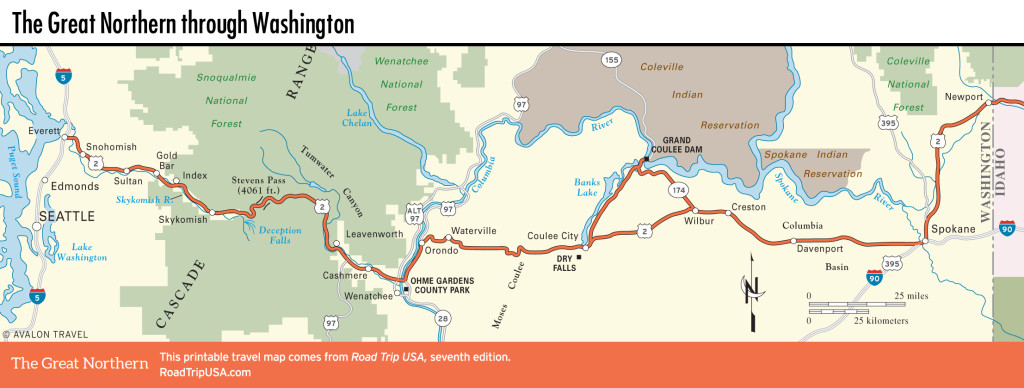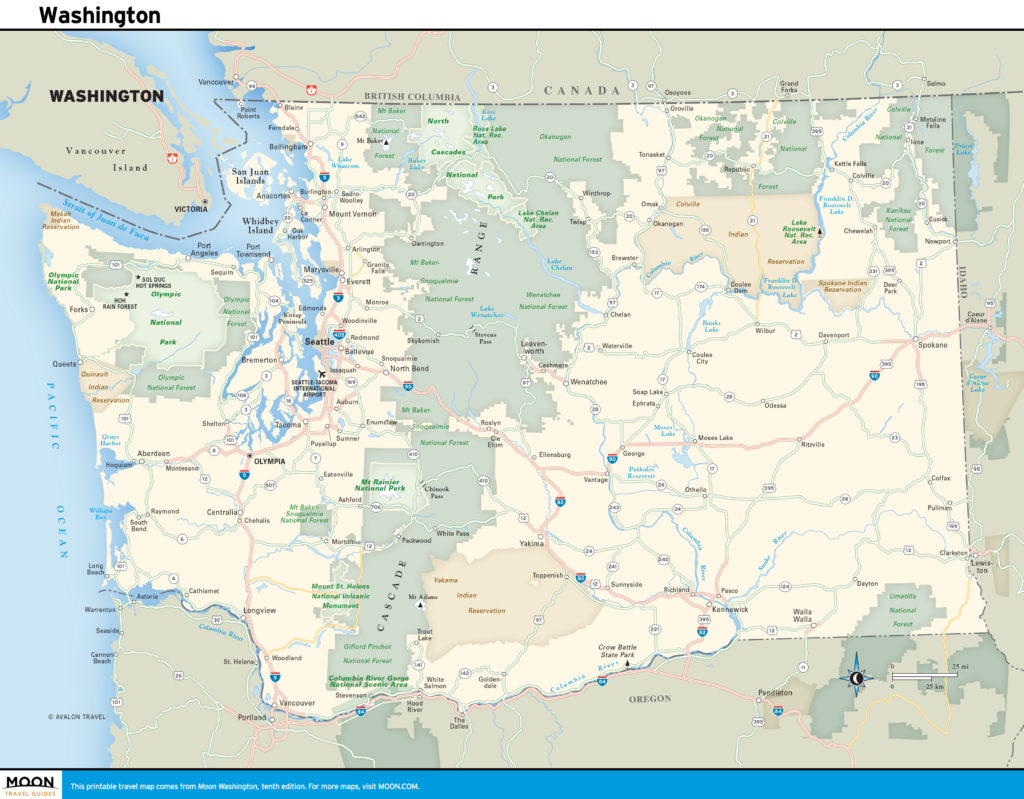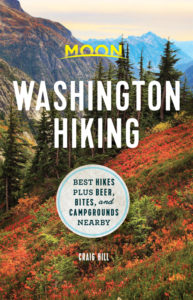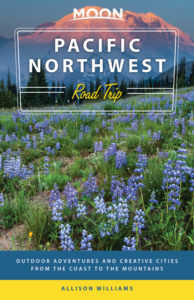Stevens Pass to Cashmere
Stevens Pass
At the crest of the Cascades, US-2 climbs over 4,061-ft (1,238-m) Stevens Pass, the highest and northernmost Cascade pass that’s kept open year-round. Stevens Pass was also a historically vital railroad crossing, though Amtrak and other trains now avoid the pass, detouring instead through an 8-mile-long (12.9 km) tunnel cut through the mountains in 1929. In 1910, before the completion of the tunnel—the longest still in use in the western hemisphere—the pass was the site of the worst avalanche disaster in U.S. history: 96 passengers and railroad workers were killed by a mile-long (1.6 km) snow slide.
Besides providing grand views of the nearby peaks and more distant valleys, Stevens Pass is also a popular ski area (206/634-1645) with 10 chair lifts, reasonable rates, a terrain park, and a 1,800-foot vertical drop. In summer, the slopes convert to a mountain-biking terrain park.
Tumwater Canyon
Heading east through the Cascades from Stevens Pass, US-2 runs through the forests of Tumwater Canyon, a breathtaking place when fall color sweeps through it, and quite scenic any other time of year. Much of the surrounding wilderness was badly burned by wildfires, but most of the area right along US-2 survived pretty much unscathed.
All along this stretch, US-2 winds along the raging Wenatchee River through evergreen conifer forests highlighted by occasional aspens. The river is a popular rafting and kayaking spot, whose challenges vary with the water levels and intensity of the snowmelt. There are also some nice late-summer swimming holes, easily accessible from US-2, but the roadside is basically undeveloped, with one exception: At Coles Corner, 15 mi (24 km) west of Leavenworth, the blue-roofed ’59er Diner (509/763-2267) is a popular road-food restaurant, with great juicy burgers, crispy fries, milk shakes, and a jukebox.
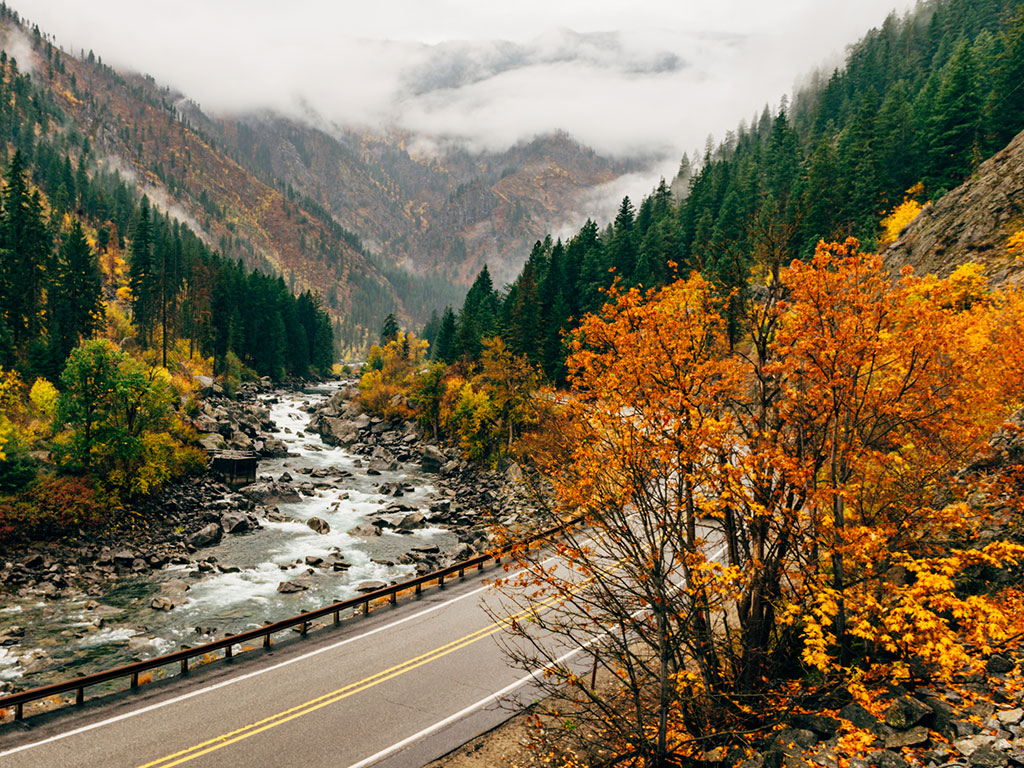
Leavenworth
Sitting in the eastern foothills of the Cascades, 128 mi (206 km) from Seattle, Leavenworth (pop. 2,010) has successfully transformed itself from an economically depressed railroad town into one of the most popular day-trip destinations in the Pacific Northwest. After the local lumber mills closed down in the mid-1960s, the town took advantage of its spectacular location and recreated itself as an ersatz Bavarian village; it has been drawing huge crowds of tourists ever since—over a million visitors annually. Check out the old photographs on the walls of Stein beer hall, on the corner of 8th and Commercial Streets, for the whole story.
Over a dozen blocks of half-timbered pseudo-chalets and Tyrolean shopping malls house a range of low-budget craft galleries, sausage-and-beer gardens, and T-shirt stores, which you can escape by walking two blocks south to an attractively landscaped park along the Wenatchee River. Eat and drink at the Heidleburger Drive-In (12708 US-2, 509/548-5471), near the west end of town, or at the elaborate mock-Bavarian McDonald’s. Perhaps the best place to eat and drink is the welcoming, popular, and inexpensive München Haus (709 Front St., 509/548-1158). Another pleasant and moderately priced place to stay is the Linderhof Inn (690 US-2, 509/548-5283 or 800/828-5680, $109 and up).
Cashmere
At the heart of the Wenatchee Valley, surrounded by apple orchards and bare-brown eastern Cascade foothills, Cashmere (pop. 3,157) has an attractive downtown district, its unusual red columns and brown-shingled awnings both shading the sidewalks and giving the town some visual identity. The main sight here is the large Cashmere Museum and Pioneer Village (daily Apr.-Oct., $8), off US-2 at the east end of town, with an excellent collection of Native American artifacts and an outdoor Pioneer Village made up of 20 different historic structures from around the county.
Cashmere is also the home of Aplets and Cotlets, fruit-and-nut candy, started here in the 1920s by two Armenian immigrants. These sweet treats are so dominant in the local scheme of things that the main route into town has been renamed Aplets Way. The Liberty Orchards factory (daily Apr.-Dec., Mon.-Fri. Jan.-Mar.), across from the railroad depot, is open for free tours and samples.
For road food (and good milk shakes!), stop by Rusty’s Drive-In (700 Cotlets Way, 509/782-2425) at the east edge of town near the museum, or head to the block-long downtown district, where you’ll find a handful of cafés and taverns and the Village Inn (229 Cottage Ave., 509/782-3522, $79-109).
Ohme Gardens County Park
Overlooking the confluence of the Wenatchee and Columbia Rivers on a bluff above the junction of US-2 and US-97, Ohme Gardens County Park (509/662-5785, daily, $8) maintains nine ac (3.6 ha) of immaculate greenery that offer a cool contrast to eastern Washington’s arid terrain. Created beginning in 1929 by the Ohme family, the lush plantings of ferns and evergreens have transformed an otherwise rugged Cascade crest. Stone pathways wind past waterfalls and rocky pools, culminating in a rustic lookout that gives sweeping views of Wenatchee and the surrounding Columbia River Valley.
Related Travel Maps
